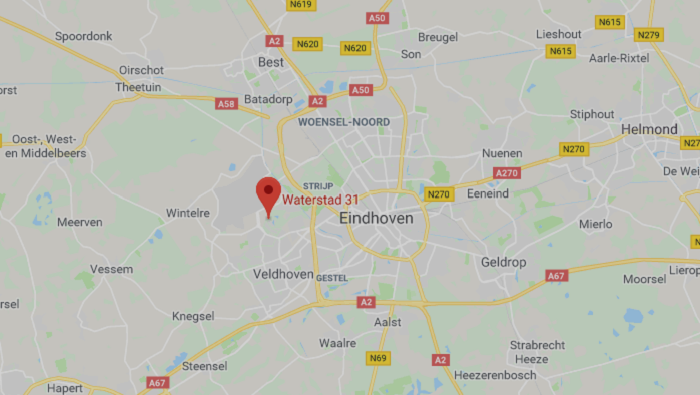CAVE Multi-view projection setup
Simple CAVE Multi-view projection setup
Did you know that using a number of projectors and a number of projection walls one can create perfect Immersive Projection setup for simulators and any media playback.
You need just a number of projectors, a simple screen room shape of 3 or more flat projection surfaces and Fly Elise-ng software.
A cave projection environment (better known as CAVE) is an Immersive projection environment where projectors are directed to between three and six of the walls of a room-sized cube.
The walls of a CAVE are typically made up of front or rear-projection screens. The floor can be a downward-projection screen. The projection systems are very high-resolution due to the near distance viewing which requires very small pixel sizes to retain the illusion of reality.
To be able to create an image that will not be distorted or out of place, the projectors must be calibrated. Immersive Designer PRO and Immersive Calibration PRO have full support for calibrating and auto-aligning a multi projector CAVE system.
This post will describe how to create a CAVE projection setup, how to auto-align the projectors and how to configure your flight simulator for perfect geometrical correction.
In this setup we will use 4 HD projectors each projecting on one side (wall) of the CAVE. We will use Left , Front, Right and Bottom walls.
The size of the CAVE is 3m x 3m x 2m (3 by 3 meters and 2 meters high). 4 projectors are positioned to projector on each wall with a minimal overshoot.
A camera will be used to scan the projector and auto-align in Immersive Calibration PRO. Each wall is captured by a separate camera.

A cockpit shell is placed in the middle of the room and the primary eyepoint is defined at vertical position 1.2 m from the floor. The calibration will ensure that the image will be perfectly geometrically corrected from thai eyepoint.
The shadows casted from the cockpit shell are evaluated and confirmed to be outside of the main field of view.
Immersive Designer PRO is a must-have software for designing and evaluating any multi-projection environment.
Check it out here:
https://fly.elise-ng.net/immersive-designer-pro/
After the design phase, we can build the real projection setup and position the projectors and the cameras at their design positions.
Next step is auto-alignment and edge blending.
Immersive Calibration PRO is the most advanced and versatile auto-alignment and edge blending software.
https://fly.elise-ng.net/immersive-display-pro/
Let’s start Calibration PRO and configure the auto-alignment
In the screen selection window select the “Cave” screen and the “Map to Camera” option.

In the projectors section create 4 projector and configure the each client projector

In the screen section defined the screen parameters, the screen rows and columns and the projectors projecting on each screen wall.
In our case, the designed eyepoint is on position 1.2m and our screen is 2m high. Because we put the designed eyepoint to the center of the screen, we define the vertical values from -1.2m to 0.8m.
Projector1 is projecting on the Front wall, projector2 on the left, projector3 on the right and projector4 on the bottom wall.
We defined that each wall will be divided in 10 rows and 10 colument and we will put markers on each wall edge to be able to map the cameras to the projection screen.

In the views section, for each camera we define the rows and columns visible in the camera view as well as the projector visible in the camera view. Also, we select the camera to be used for this camera view. We position the camera so that the camera can see the complete screen wall.

In the Map/Scan section, for each view, we do the following:
- Map the screen grid in on the screen edges using 6 or more reference points. Move the reference points in the camera view to the exact physical markers on the screen. The auto-map option will make sure that the rest of the grid points will be automatically mapped in the camera view.

2. Press the Mask button. To ensure perfect projector scanning, use the screen mask in the mask section to make sure that the projectors scanning will only look for projector image in the masked area (only on the screen wall)

3. Press the Projector button. In the projector screen press the scan projector button. This will start the projector scan process. After the scanning is finished the fully recognized projector blobs will be identified in the camera views.
In case that not all fully visible projector blobs are recognized, change the size of the projector blobs and repeat the scanning.

Repeat the same steps from 1 to 3 for all cameras.
After the screen mapping and projectors scanning is done for all cameras, press the calculate button. This will calculate the geometrical correction as well as the masking so that the projector will project the correct images on the projection surface.


Go to the Perspective section and press the Find Frustums button, This will calculate the optimal perspective view parameters that can be used in any 3D engine or simulator to generate the output for each projector for 100% accurate perspective geometric views.

After that press the “Calculate perspective” button. This will calculate the geometric correction and the masking for any 3D engine and simulator perspective view.

After this step, go to the export section and export the .procalib data as well as the settings data for the desired simulator

Once the data is exported, configure the simulator with the exported views data (FOV and offset) and load the multi.procalib file in the corresponding display in Immersive Display PRO.
That is all. Start the simulator in full screen mode and enjoy the perfect views with no distortion.




We`re here to help!

Office
Waterstad 31
5658 RE Eindhoven
The Netherlands
Hours
M-F: 8am - 10pm
S-S: Closed
Call Us
+31 40 7114293
Support
support@elise-ng.net
